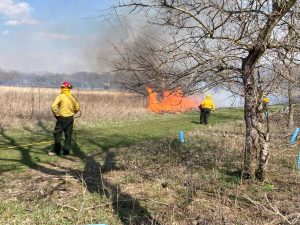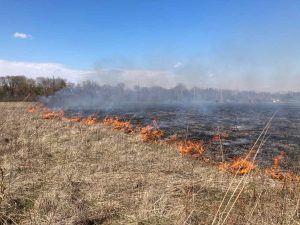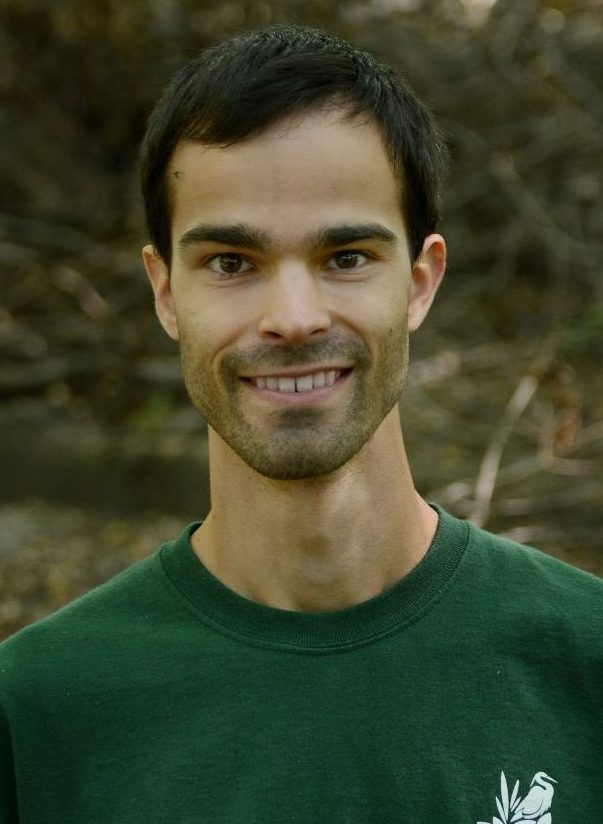With a high plant diversity and stable plant populations, a prairie can provide habitat for a plethora of insects and birds. That’s one thing that makes our Nonie Werbe Krauss Nature Preserve so special. Almost 90 species of birds have been found on CILTI’s only prairie habitat nature preserve.
But that habitat can easily degrade without proper stewardship. We consider prescribed fire a key part of this site’s management plan. Among the many tools in our toolbelt for land management, prescribed fire is one of the most wholistic and rapidly growing management practices for land preservation.
It might seem counterintuitive to seemingly destroy a habitat with fire in order to preserve it, but in the long term, prescribed fire is incredibly beneficial. Every system at its foundation needs good soil to allow plants to thrive.
When a fire moves across a prairie, it burns up the dead grasses and leaves, returning some of the nutrients locked in the debris to the soil in a form readily usable by plants and microbes. The removal of the duff also lets sunlight shine directly on the exposed earth. That encourages new growth in young sprouts that could otherwise be smothered. It also fosters microbial growth by warming the soil.
With a fresh start, the playing field is leveled a bit. Fire helps keep populations of aggressive plants under control while fostering growth of less competitive species.
Another benefit of prescribed fire is keeping invasives species out. Being an urban nature preserve, Nonie Werbe Krauss has invasive pressure from all angles, particularly in the form of Callery pear and Amur honeysuckle. These species don’t tolerate fire well. Burning the prairie helps control them while saving CILTI staff time and resources that would otherwise go into treating these plants with herbicide.

Fostering better soil and native plant species while at the same time minimizing the presence of invasive plant species sounds like a win-win!
In March, Davey Resource Group conducted this year’s prescribed burn at Nonie Werbe Krauss.
The difference between a prescribed fire (which is good) and a wildfire (which can be bad) is control. Burns are planned for a window of time when no animals are active in the fall/winter/spring. The fire crew prioritizes the safety of the crew and the safety of the areas surrounding the prescribed area. To that end, there is extensive site preparation before the burn to ensure that 1) everyone on the crew has proper equipment, 2) there is ample water on hand, and 3) all flammable material within perimeter lines has been removed.
A burn typically begins with the fire burning against the wind, which makes for a slow burn and consumes all the fuel as the fire creeps along. This is called a back-burn. With a much wider perimeter established now because of the area that has already been burned, a fire can be ignited at another area upwind. The flames will burn faster and hotter as the wind drives it towards the back-burn. This process can be repeated until the entire area is burned.

Nonie Werbe Krauss Nature Preserve was due for another burn, and the thoroughness of the burn area is striking. As anyone driving by the preserve on Eller Rd. or 116th can see, the prairie looks dramatically different post-burn.
But if you want to see what a prairie looks like freshly burned, don’t wait to visit! The plants have already sprouted, mere days after the fire, and it won’t be long before the prairie is teeming with flowers and birds once again.
For more about the use of fire as a restoration method, see this article from the National Park Service.

Phillip Weldy
Stewardship Specialist